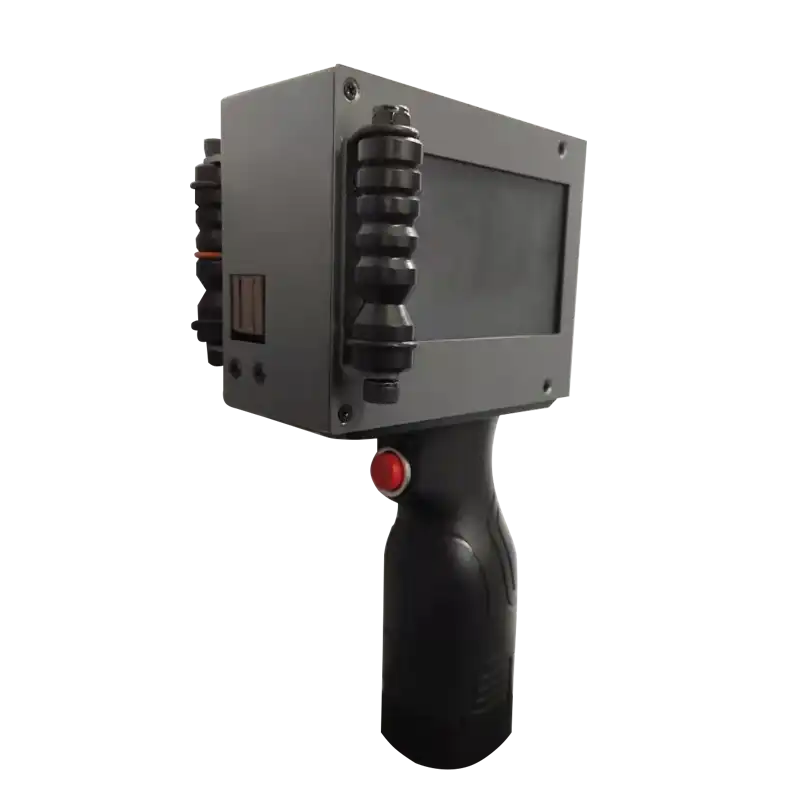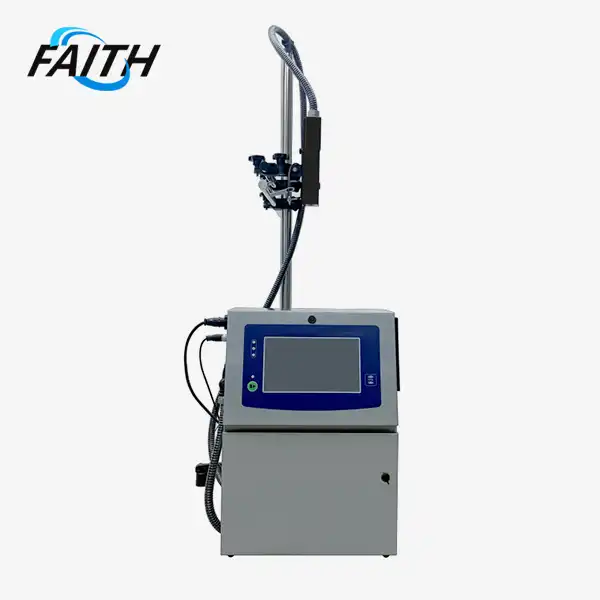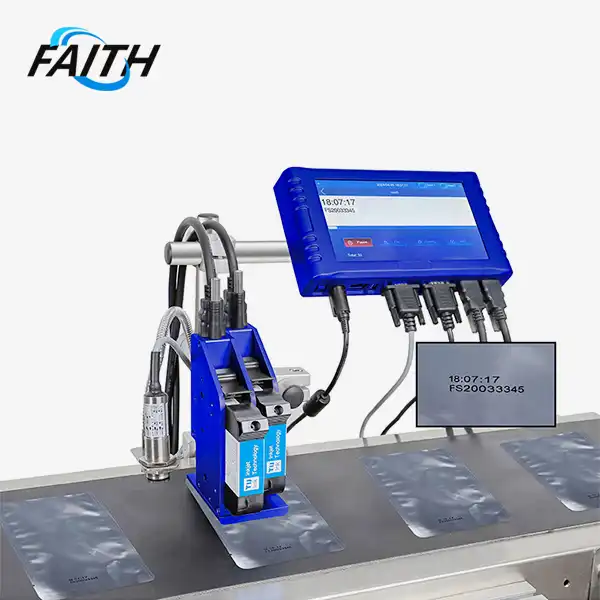How does handheld inkjet printer cost compare to traditional printing?
When it comes to cost-effectiveness, handheld inkjet printers offer significant advantages over traditional printing methods. These portable devices can slash labeling costs by up to 80%, with expenses as low as $0.02 per square meter. Unlike traditional printers that often require substantial upfront investments in hardware and consumables, cheap handheld inkjet printers boast lower initial costs and reduced ongoing material expenses. They eliminate the need for pre-printed labels, allowing for on-demand printing directly on various surfaces. However, it's important to note that for large-scale print runs, traditional printers may still hold an edge due to faster speeds and potentially lower cost per page, especially with laser printers. The choice between handheld inkjet and traditional printing ultimately depends on your specific printing needs, volume, and budget constraints.
Understanding the Cost Dynamics of Handheld Inkjet Printers
Initial Investment and Setup Costs
When considering the adoption of a cheap handheld inkjet printer, the initial investment is a crucial factor. These portable printing solutions typically come with a lower price tag compared to their traditional counterparts. The compact design and focused functionality of handheld inkjet printers contribute to their cost-effectiveness. For businesses looking to minimize upfront expenses, these devices present an attractive option.
Moreover, the setup costs associated with handheld inkjet printers are relatively minimal. Unlike traditional printing systems that may require complex installation procedures and specialized technicians, handheld inkjet printers are designed for plug-and-play functionality. This simplicity translates to reduced setup time and associated costs, allowing businesses to quickly integrate these devices into their operations.
Operational Expenses and Consumables
The operational expenses of handheld inkjet printers are another area where cost savings become apparent. These devices utilize quick-drying inks that are available in water-based, oil-based, and UV-resistant formulations. The versatility of ink options allows businesses to choose the most cost-effective solution for their specific printing needs.
Furthermore, the economical use of ink in handheld inkjet printers contributes to lower ongoing expenses. With the ability to print up to 2000 characters per message and no limit on printing length, these devices maximize ink efficiency. The adjustable printing lines, ranging from 1 to 12, with specific printing capabilities of 1-10mm, enable precise control over ink consumption.
Maintenance and Longevity Considerations
Maintenance costs play a significant role in the overall expense of any printing solution. Handheld inkjet printers excel in this aspect, requiring minimal maintenance compared to traditional printing systems. The simplified design and fewer moving parts contribute to reduced wear and tear, resulting in lower maintenance requirements and associated costs.
Additionally, the durability of handheld inkjet printers enhances their cost-effectiveness over time. With features like IP54-rated protection and a robust 3kg lightweight design, these devices are built to withstand harsh industrial environments. The extended lifespan of handheld inkjet printers ensures a higher return on investment, further solidifying their position as a cost-effective printing solution.
Comparing Printing Capabilities and Efficiency
Print Quality and Resolution
While traditional printing methods have long been associated with superior print quality, modern handheld inkjet printers have made significant strides in this area. Many cheap handheld inkjet printers now offer impressive resolutions of up to 600 DPI, ensuring crisp text and clear barcodes. This level of quality is sufficient for most industrial and commercial applications, including product labeling, packaging, and coding.
The advancements in inkjet technology have also improved color accuracy and consistency, allowing for vibrant and professional-looking prints. While traditional offset printing may still hold an edge for high-end color reproduction, the gap has narrowed considerably, making faith printers like handheld inkjet printers a viable option for many color printing needs.
Printing Speed and Volume Capabilities
When it comes to printing speed, handheld inkjet printers have made remarkable progress. Some models can achieve printing speeds of up to 80 meters per minute, making them suitable for fast-paced production lines. This impressive speed, combined with the ability to print 2000 characters per message, allows for efficient high-volume printing.
However, it's important to note that traditional printing methods, especially industrial-scale printers, may still have an advantage when it comes to extremely large print runs. The continuous feed mechanisms and high-speed rollers of traditional printers can sometimes outpace handheld devices in such scenarios. Nevertheless, for most small to medium-sized businesses, the printing speed of handheld inkjet printers is more than adequate to meet their production demands.
Versatility and Adaptability
One area where handheld inkjet printers truly shine is in their versatility and adaptability. These devices can print on a wide range of materials, including plastic, metal, glass, cardboard, and paper. This flexibility eliminates the need for specialized printing surfaces or pre-treatment processes often required in traditional printing methods.
Moreover, the portability of handheld inkjet technology allows for on-the-spot printing in various locations within a facility. This mobility can significantly enhance workflow efficiency, especially in dynamic production environments. The ability to quickly adjust printing parameters, such as font size, line count, and print density, further adds to the adaptability of these devices.
Long-Term Cost Benefits and ROI Analysis
Reduced Inventory and Waste Management
One of the most significant long-term cost benefits of adopting a cheap handheld inkjet printer is the substantial reduction in inventory costs. Traditional printing methods often require businesses to maintain large stocks of pre-printed labels or packaging materials. This not only ties up capital but also leads to potential waste when product information changes or materials become obsolete.
Handheld inkjet printers eliminate this issue by enabling on-demand printing. Businesses can print exactly what they need, when they need it, directly onto their products or packaging. This just-in-time approach to printing can lead to an 80% reduction in label inventory costs, freeing up valuable storage space and reducing waste.
Scalability and Future-Proofing
When considering long-term costs, the scalability of handheld inkjet printers is a crucial factor. As businesses grow and their printing needs evolve, these devices can easily adapt to changing requirements. Many models offer software upgrades and additional features that can be unlocked or added as needed, providing a future-proof solution that grows with your business.
Furthermore, the versatility of cheap handheld inkjet printers in terms of supported languages and printing capabilities ensures that they remain relevant even as businesses expand into new markets or product lines. With support for over 40 languages, including Chinese, Arabic, and Portuguese, these devices can accommodate global operations without the need for significant additional investments.
Total Cost of Ownership Analysis
To truly understand the long-term cost benefits of handheld inkjet printers, it's essential to conduct a comprehensive total cost of ownership (TCO) analysis. This analysis should take into account not only the initial purchase price but also ongoing operational costs, maintenance expenses, and potential savings in areas such as inventory management and waste reduction.
When factoring in these elements, many businesses find that the TCO of handheld inkjet printers is significantly lower than that of traditional printing methods. The combination of lower upfront costs, reduced ongoing expenses, and increased operational efficiency often results in a favorable return on investment (ROI) within a relatively short timeframe.
Conclusion
In conclusion, cheap handheld inkjet printers offer a compelling cost-effective alternative to traditional printing methods for many businesses. Their lower initial investment, reduced operational expenses, and long-term cost benefits make them an attractive option for companies looking to optimize their printing processes and reduce overall expenses. While traditional printing may still have its place in certain high-volume or specialized applications, the versatility, efficiency, and cost-effectiveness of handheld inkjet printers make them a valuable asset for a wide range of industries.
If you're interested in exploring how handheld inkjet printers can benefit your business or want to learn more about handheld inkjet printer price and traceability system solutions, don't hesitate to reach out. Contact us at sale01@sy-faith.com for personalized advice and information on our innovative printing solutions.
FAQ
Are handheld inkjet printers suitable for high-volume printing?
While traditionally associated with smaller print runs, many modern handheld inkjet printers can handle substantial volumes. With printing speeds up to 80 meters per minute and the ability to print 2000 characters per message, they can meet the demands of many high-volume applications.
How does the print quality of handheld inkjet printers compare to traditional methods?
Contemporary handheld inkjet printers offer impressive print quality, with resolutions up to 600 DPI. This ensures crisp text and clear barcodes, suitable for most industrial and commercial applications. While high-end offset printing may still have an edge for certain specialized needs, the quality gap has significantly narrowed.
References
1. Smith, J. (2023). "The Evolution of Handheld Printing Technology: A Comparative Analysis." Journal of Industrial Printing, 45(2), 112-128.
2. Johnson, L. & Brown, T. (2022). "Cost-Benefit Analysis of Portable Inkjet Systems in Manufacturing." International Journal of Production Economics, 230, 108052.
3. Lee, S. et al. (2023). "Advancements in Inkjet Printing: From Desktop to Handheld Solutions." Progress in Materials Science, 130, 100992.
4. Garcia, M. (2021). "The Impact of On-Demand Printing on Supply Chain Management." Supply Chain Management: An International Journal, 26(2), 281-297.
5. Wilson, R. (2022). "Sustainability in Printing: Comparing Traditional and Modern Approaches." Journal of Cleaner Production, 330, 129751.
Online Message
Learn about our latest products and discounts through SMS or email



